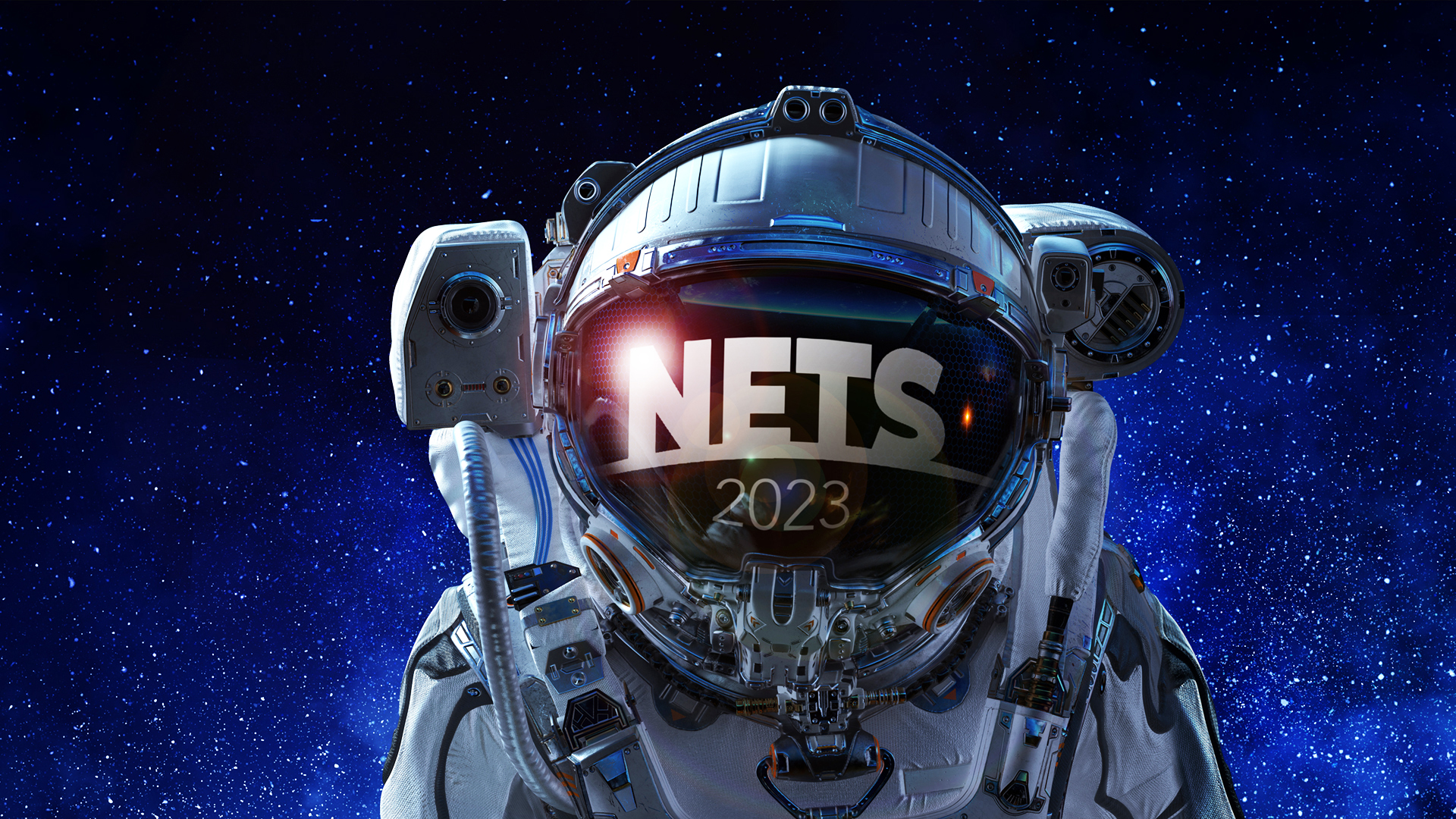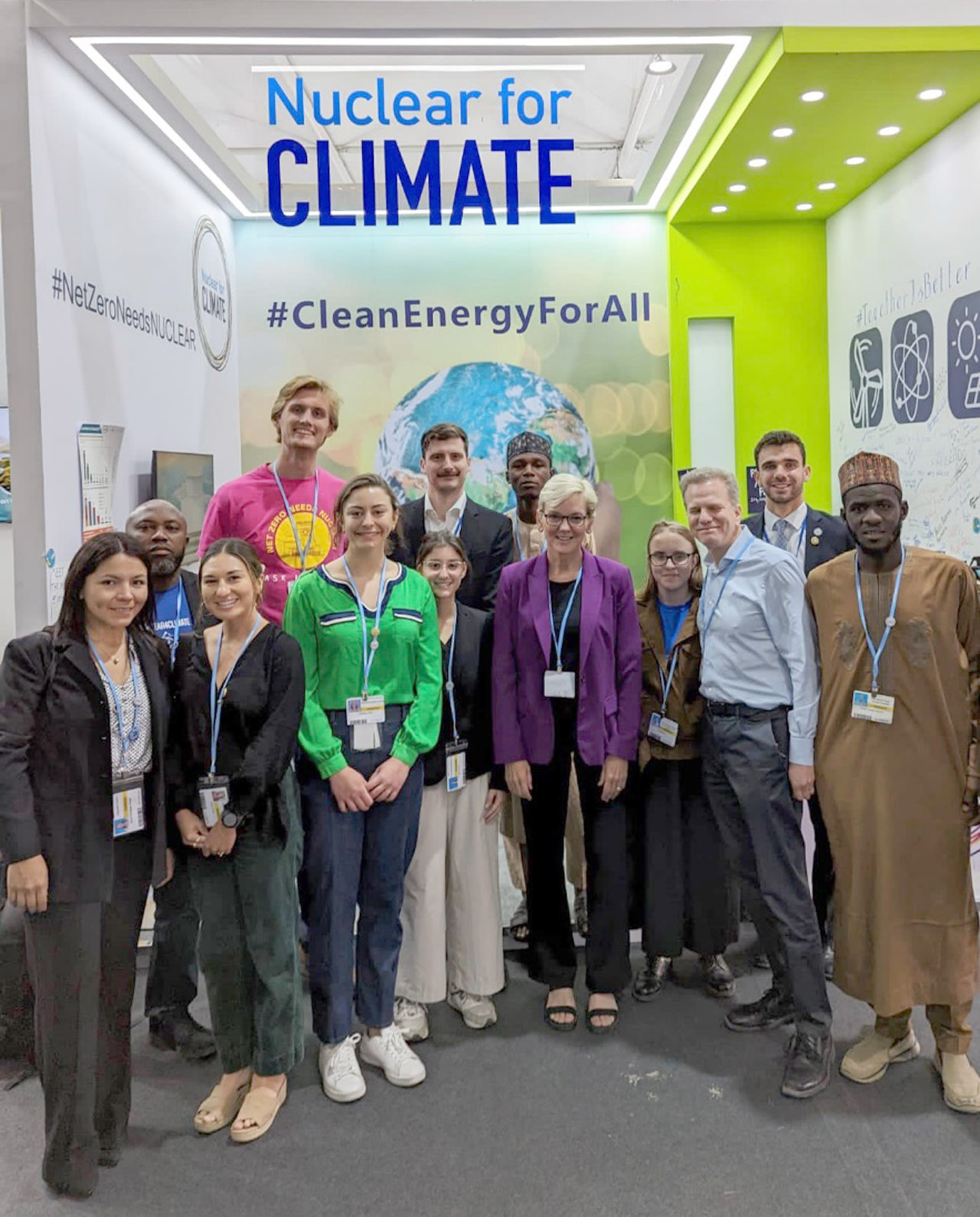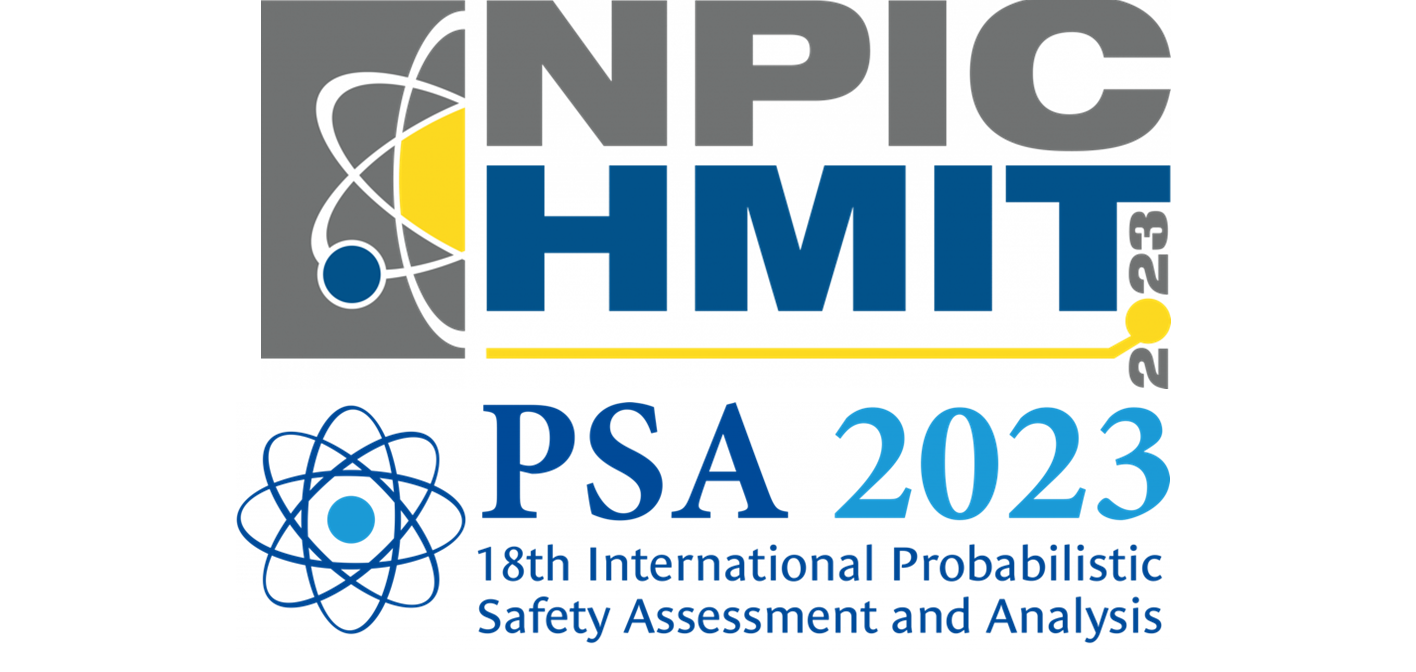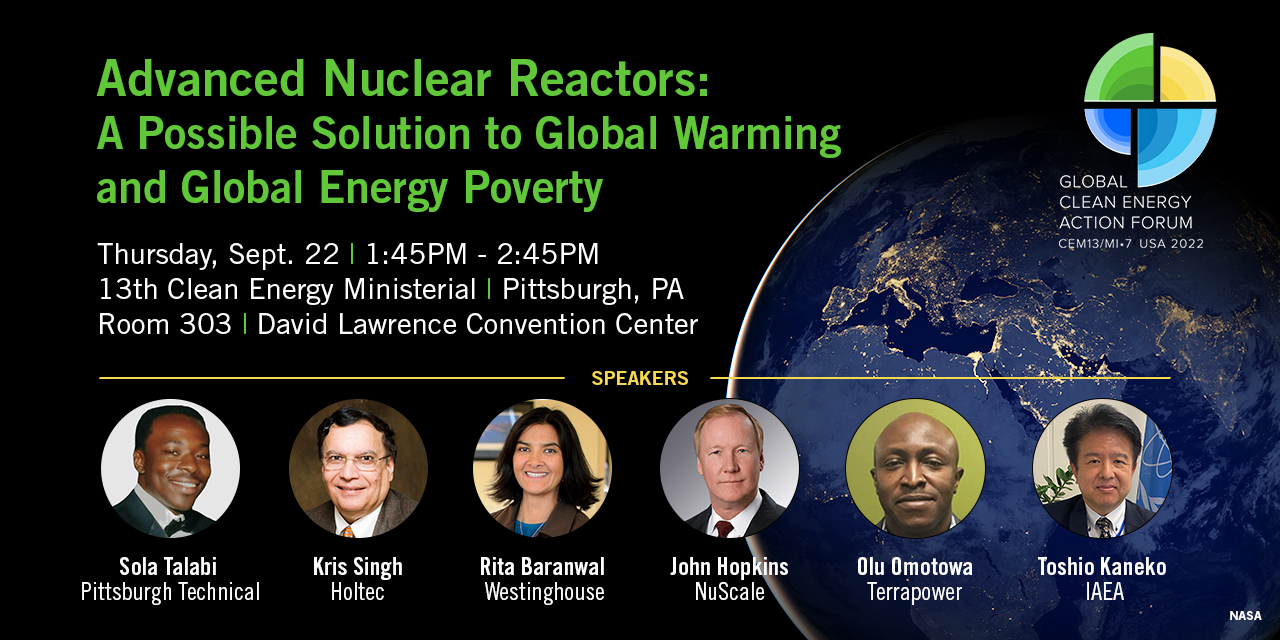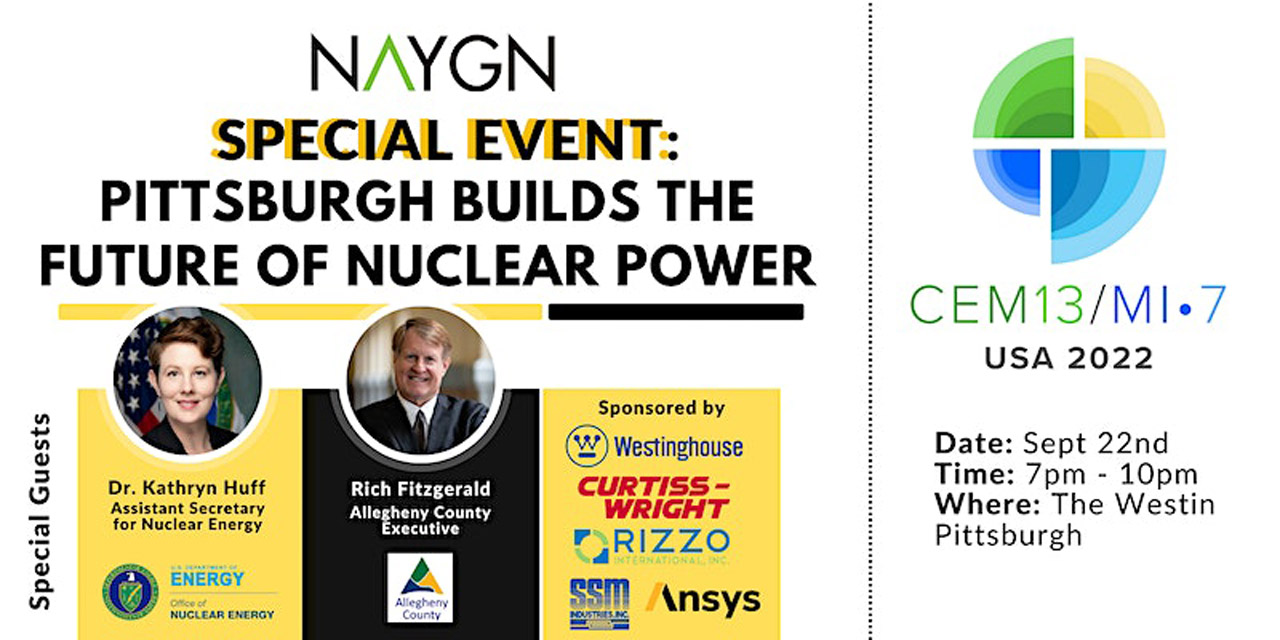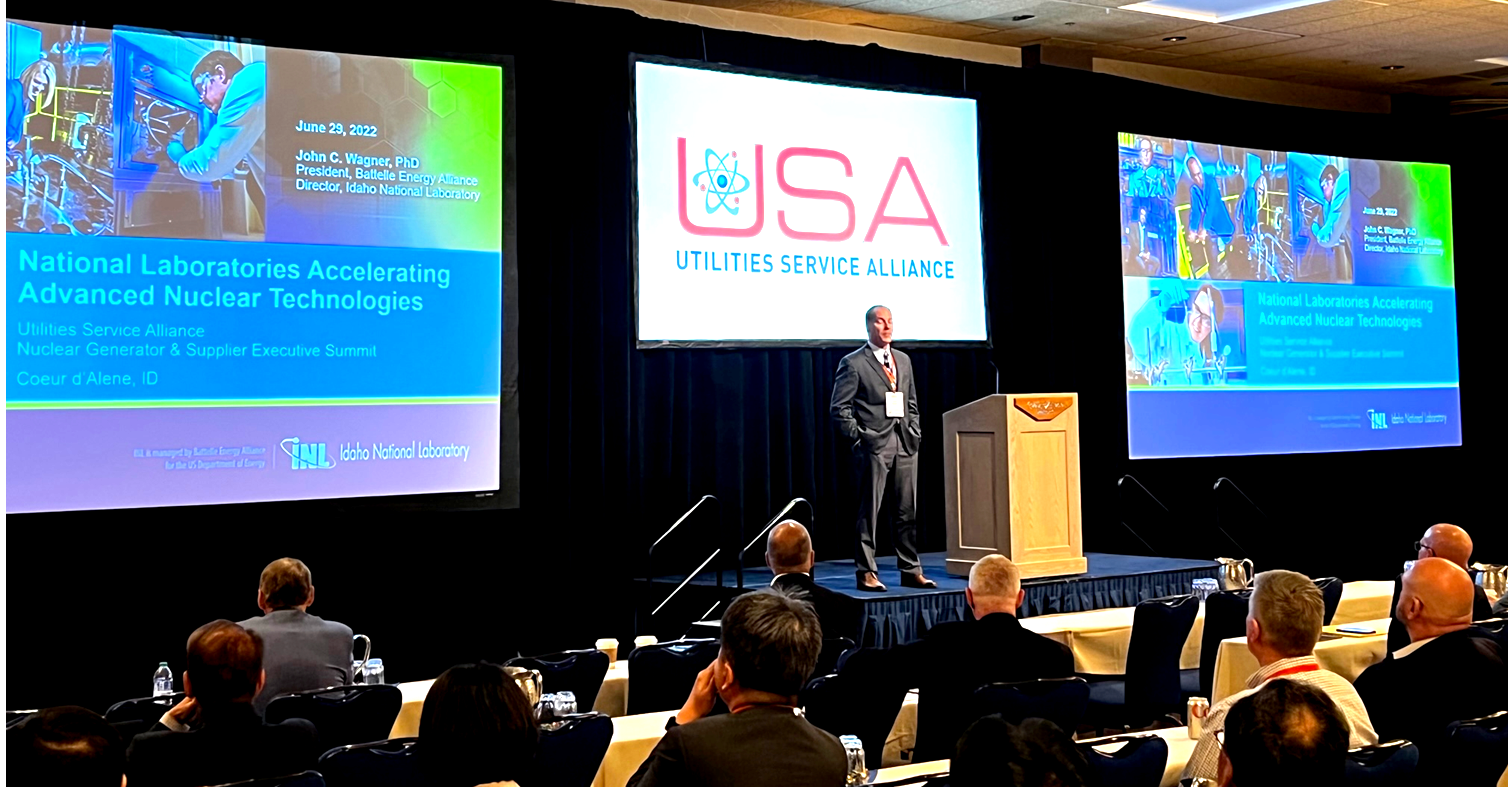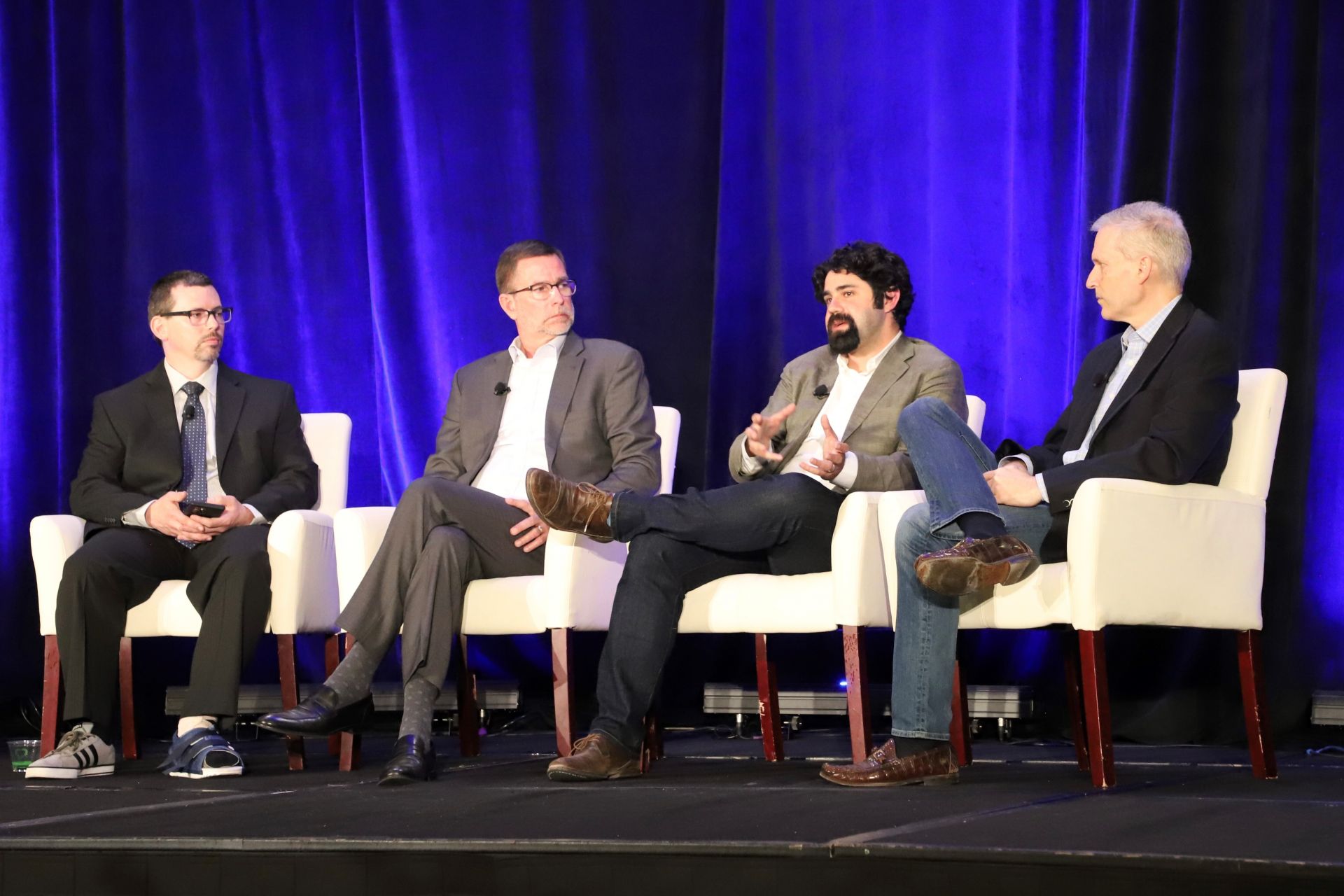ANS immediate past president Steven Arndt, Jeffrey Merrifield, and John Kotek on stage at the ANS annual meeting President's Plenary.
At the 2023 ANS Annual Meeting, Steven Arndt (as of the close of the meeting, ANS immediate past president) led a president’s session on the mission of the Nuclear Regulatory Commission—a not particularly surprising topic, given that he spent over 30 years at the agency in various roles.
Craig Piercy (left) discusses “The State of Nuclear” with panelists (sitting left to right) Brad Williams, Todd Abrajano, and John Kotek, as well as Amy Roma and Jackie Siebens, who participated via video feed.
The “The State of Nuclear” panel discussion on June 13 at the 2023 American Nuclear Society Annual Meeting focused on how geopolitical issues are affecting federal, state, and international laws, regulations, and funding regarding nuclear technology. The discussion was chaired by ANS Executive Director/CEO Craig Piercy.
Students attending a past Utility Working Conference in Florida.
The American Nuclear Society's 2023 Utility Working Conference and Vendor Technology Expo is accepting applications for knowledge managers to work during the meeting. The UWC, which will have a theme of “Building Resiliency in a Rapidly Changing World,” will be held at the JW Marriott Marco Island Beach Resort on Marco Island, Fla., on August 6–9, 2023.
The ANS Operations and Power Division will pay the conference registration fee for up to six knowledge managers, who also will receive three complimentary nights of housing at the Marriott resort.
Further details on the conference are available online.
From left: Christina Leggett (Booz Allen Hamilton), Morris Hassler (IB3 Global Solutions), Everett Redmond (Oklo), Andy Griffith (DOE-NE), Ben Jordan (Centrus), Stephen Long (GLE), and Magnus Mori (Urenco).
Whether commercial demand for high-assay low-enriched uranium (HALEU) fuel ultimately falls at the high or low end of divergent forecasts, one thing is certain: the United States is not ready to meet demand, because it currently has no domestic HALEU enrichment capacity. But conversations happening now could help build the commercial HALEU enrichment infrastructure needed to support advanced reactor deployments. At the 2022 American Nuclear Society Winter Meeting, representatives from three potential HALEU enrichers, the government, and industry met to discuss their timelines and challenges during “Got Fuel? Progress Toward Establishing a Domestic US HALEU Supply,” a November 15 executive session cosponsored by the Nuclear Nonproliferation Policy Division and the Fuel Cycle and Waste Management Division.
Energy secretary Jennifer Granholm (in purple blazer) and the ANS-sponsored delegates pose in front of the Nuclear for Climate booth at COP27.
Nuclear energy is no longer on the fringes of the international climate conversation. At COP27, the United Nations climate change conference held in Sharm el-Sheikh, Egypt, from November 6 to 18, pronuclear advocates were everywhere—and they were talking to everyone. They populated the International Atomic Energy Agency’s #Atoms4Climate pavilion, the first-ever nuclear pavilion in the 27-year history of the negotiations. Echoing such strong representation, the final statement issued by the conference used language that included nuclear power.
John Wagner, director of Idaho National Laboratory and president of Batelle Energy Alliance, delivered the keynote address at the 26th Annual Nuclear Generator & Supplier Executive Summit. (Photo: USA)
The 26th Annual Nuclear Generator and Supplier Executive Summit, hosted by Utilities Service Alliance (USA), was held at the Coeur d’Alene Golf and Spa Resort in Idaho from June 28 through July 1. About 375 attendees were present for this year’s meeting, themed “Nuclear’s Next Wave” which featured presentations and discussions on emerging nuclear technologies and designs, as well as an integrated tradeshow with about 50 industry suppliers exhibiting products, services, and ideas.
Session moderator Scott Hsu (left) led a discussion with (from left) Troy Carter, Kathy McCarthy, Artem Smirnov, Satoshi Konishi, and Jane Hotchkiss during an ANS Annual Meeting executive session on “The New Fusion Outlook.”
A “bold decadal plan” to accelerate fusion research, development, and demonstration in partnership with the private sector emerged from a March 2022 White House Fusion Summit and inspired the June 14 ANS Annual Meeting executive session titled “The New Fusion Outlook.” Moderator Scott Hsu, who is leaving a role as a program director for the Department of Energy’s Advanced Research Projects Agency–Energy (ARPA-E) to become a senior adviser to the DOE’s undersecretary for science and innovation as well as lead fusion coordinator for the DOE, ably led a panel of fusion stakeholders representing universities, national laboratories, private fusion companies, and public policy and communication. The discussion intended to bring attendees with fission experience up to speed on the rapidly accelerating area of fusion energy and explore how the fusion energy community can work toward a unique path for fusion energy regulation and public engagement.
Panelists (from left) Adam Stein, Jon Ball, Mike Laufer, and Michl Binderbauer during the Breaking Through: Assessing the Current State and Prospects of Nuclear Innovation in the Race to Decarbonize session at the ANS Annual Meeting.
If nuclear innovators are in a race to decarbonize, it is a race with one finish line—affordable, clean, and reliable power—and many ways to get there. Over 40 fission developers and 20 fusion developers are in the running, and while attendees of the June 13 ANS Annual Meeting executive session on Breaking Through: Assessing the Current State and Prospects of Nuclear Innovation in the Race to Decarbonize heard from representatives of just three of those companies, they presented very different designs and deployment approaches, aptly reflecting the broader diversity of nuclear power innovation.
Session chair Adam Stein, director of nuclear energy innovation at the Breakthrough Institute, welcomed representatives from an advanced non–light water reactor developer (Mike Laufer, Kairos Power), a small modular light water reactor developer (Jon Ball, GE Hitachi Nuclear Energy), and a fusion power developer (Michl Binderbauer, TAE Technologies). Together they explored the challenge of engineering a significant commercial scale-up of advanced nuclear technology by the end of the decade, tackling questions of cost, schedule, supply chain, regulation, and more.
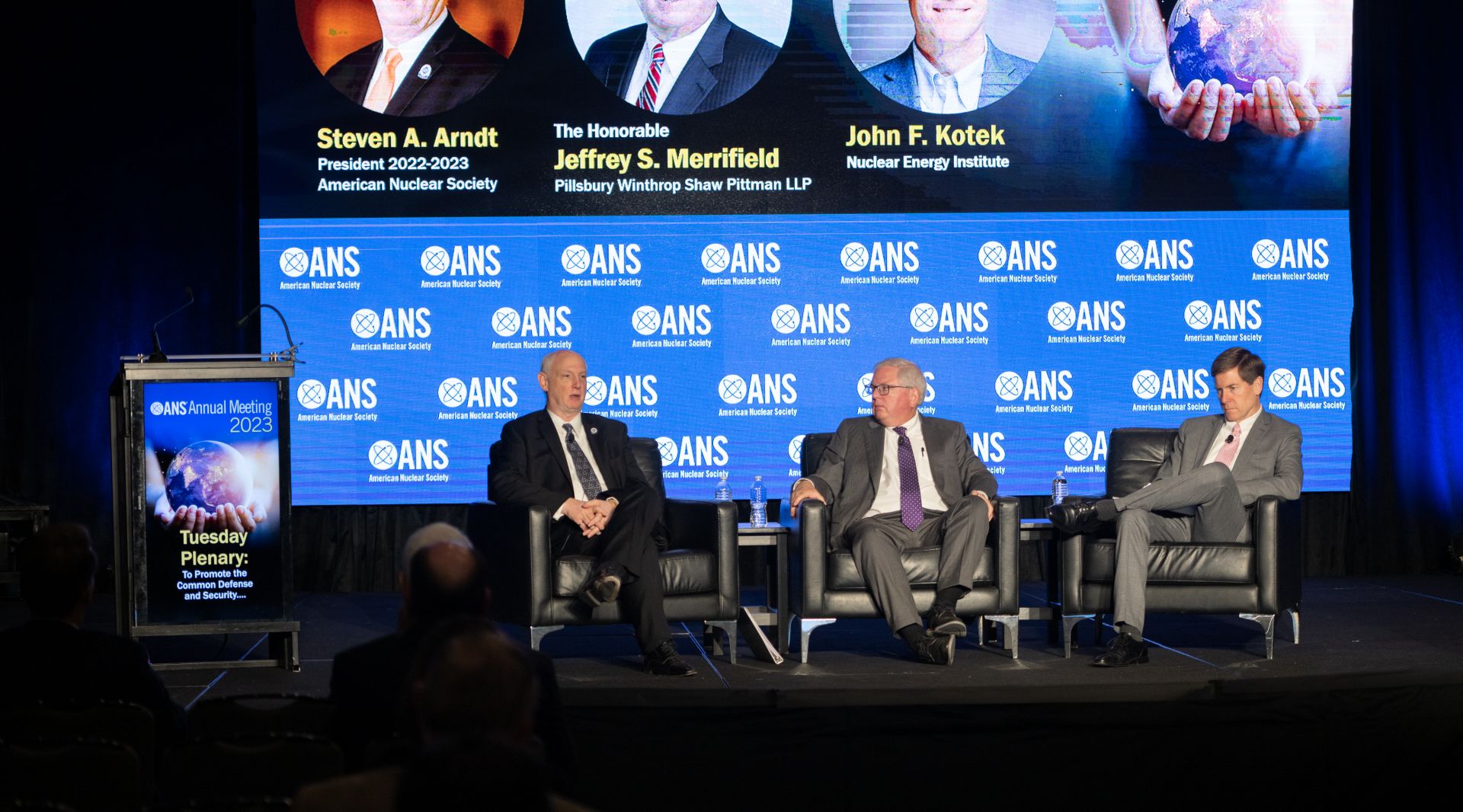




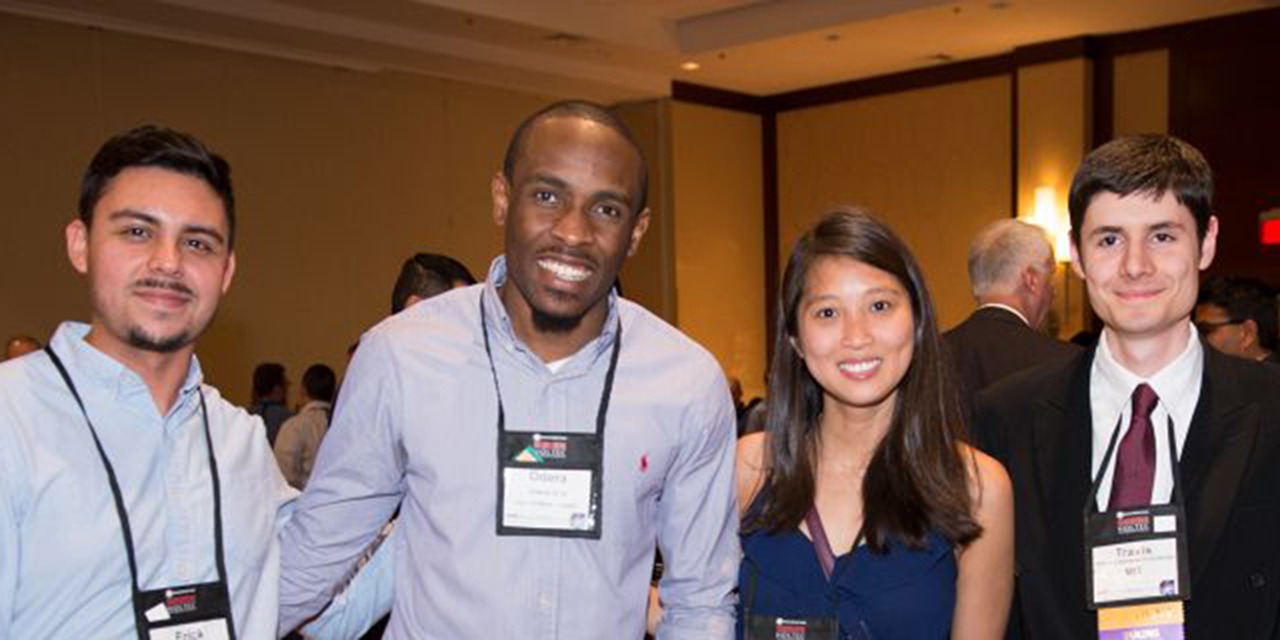
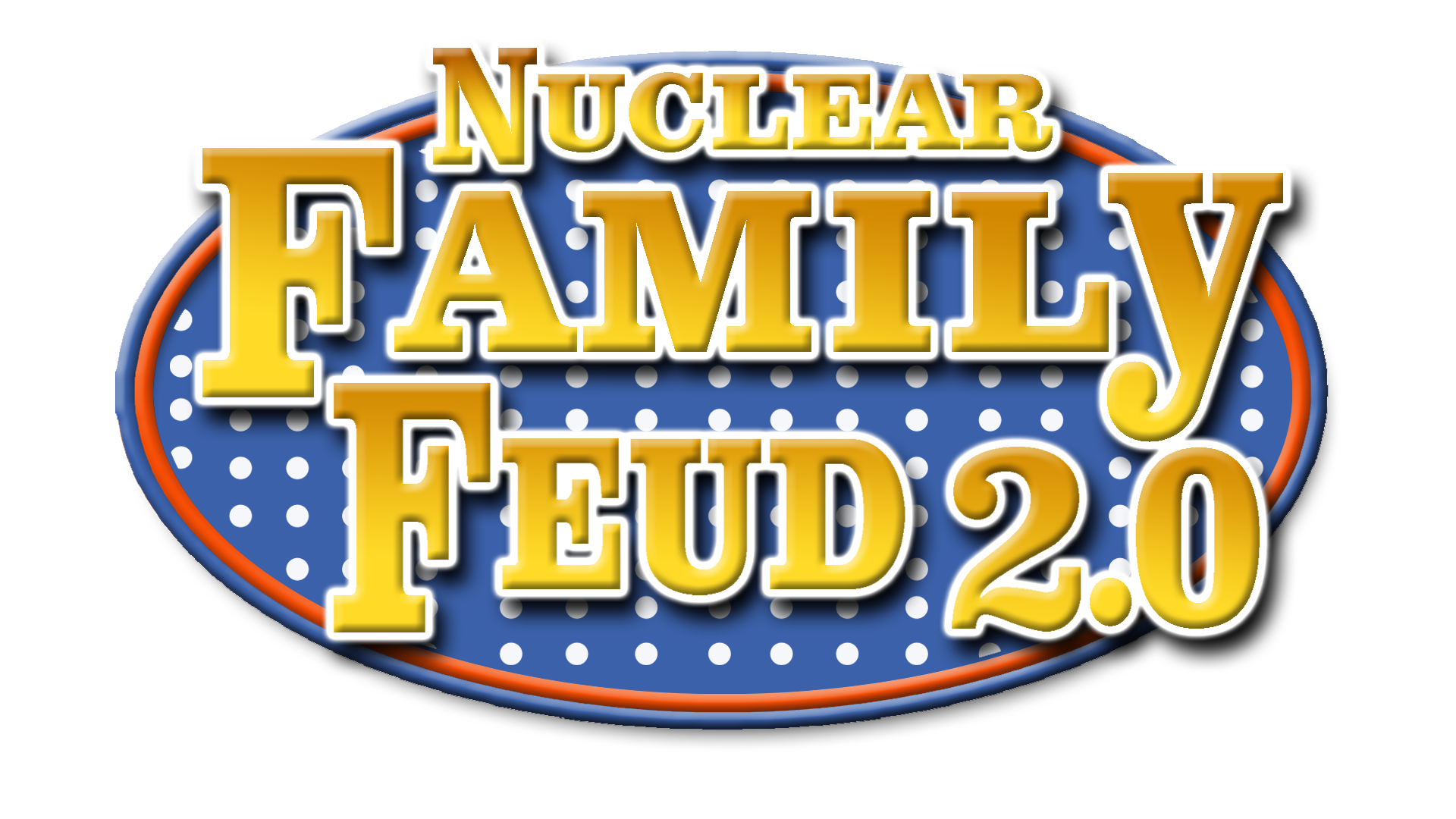
 The Nuclear Regulatory Commission has opened registration for its
The Nuclear Regulatory Commission has opened registration for its 